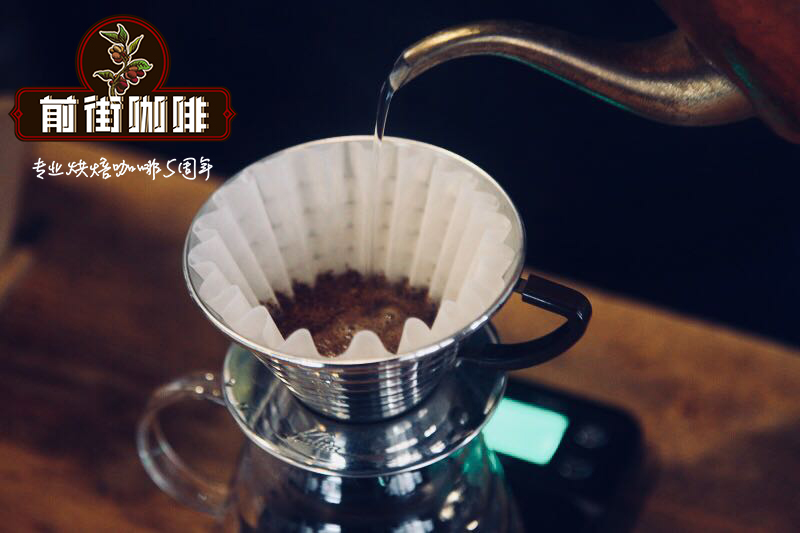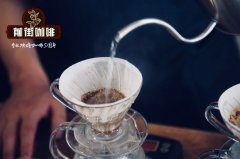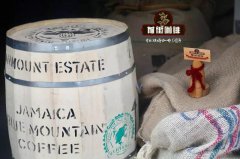How to adjust the grinding degree of jasmine hand in Guatemala? calculation of water-ice ratio of ice hand to jasmine

Professional coffee knowledge exchange more coffee bean information please follow the coffee workshop (Wechat official account cafe_style)
Guatemala is bordered by Mexico to the north, Honduras and El Salvador to the south, the Caribbean to the east and the Pacific Ocean to the west, with tropical rain forests, volcanic geology, plateau valleys and changeable micro-climate. Guatemalan coffee enjoys a reputation as the best quality coffee in the world. The extra-hard coffee beans here are full-grained, delicious and balanced, and the coffee made with it is pure and rich.
There are few places in the world that offer a variety of high-quality coffee beans like those produced in Guatemala. The reason for the excellent quality of Guatemalan coffee beans is due to the unique conditions of their producing areas, including different climate changes in each region, rich soil formed by volcanoes, abundant natural water resources, high-altitude mountains and shady, moist forests, and so on. Its geographical location occupies an important position in Central America. Guatemala covers an area of about 108899 square kilometers. The land features can be divided into plateau volcanoes, lowland tropical forests, volcanic sandy shore plains along the Pacific coast, and virgin lands along the Caribbean Sea. The SierraMadre Mountains of Central America, which straddles Guatemala from east to west, covers an area of about 2GP3 and has 34 volcanoes. In this country, rivers and lakes dot the landscape, while equatorial forests and plain jungles cover the land. There are also untapped volcanic beaches on the Pacific and Caribbean coasts.
The coffee produced in Guatemala is one of the top coffee in the world, because Guatemala is a high-altitude volcanic terrain.
These volcanoes are ideal places to grow coffee. Critics prefer this kind of coffee to other kinds of coffee.
Mixed-flavor coffee with a spicy flavor. The extra hard coffee beans here are a rare good coffee with full grains, delicious taste and balanced acidity.
Coffee was really introduced into Guatemala in 1750 by Father Jesuit, and the coffee industry was developed by German colonists at the end of the 19th century. Today, most of the coffee industry's production takes place in the south of the country. Guatemala horse
There are seven major coffee producing areas in La, and the flavor of the coffee produced in each area is different, but to sum up, the coffee from Guatemala
With a mild and mellow overall texture, elegant aroma and special and pleasant acidity similar to fruit acid, coffee has become an aristocrat in coffee, among which Antigua Classic Coffee (AntiguaClassic) has been recommended by coffee connoisseurs around the world.
If you want to simply drink a cup of sweet coffee, you might as well try a Guatemalan bean. The entrance is sweet except for left-line sweetness. Hot honey is both sweet, cool-left cantaloupe is sweet, and there is a faint scent of flowers in Zuoli. To put it simply, it is a cup of good brown.
Guatemalan Coffee-Molida Manor Las Moritas
Place of origin: Antigua
Altitude: 1550-1800 m
Processing method: honey treatment
Grade: European SHB
Baking degree: CITY+
Taste features: lime, malt caramel, flower fragrance, dark chocolate, chestnut, aftertaste
Guatemalan coffee-rich volcanic soil, smoky
How to make Guatemalan coffee [jasmine] well?
Qianjie Coffee hand Chong reference: weigh 15g [jasmine] coffee powder, pour into the grinder to grind moderately, the ground particles are slightly thicker than salt, we use BG bean grinder to scale 5R (standard sieve pass rate 60%), water temperature 89 degrees, V60 filter cup extraction.
The hot water in the hand flushing pot draws a circle clockwise with the center of the filter cup. Start the time when brewing, brew the coffee to 30g in 15 seconds, then stop the water injection, and when the time is up to 1 minute, the second water injection. The second water injection is the same as before, draw a circle clockwise with the center of the filter cup, and the water flow should not rush to the place where the coffee powder is connected with the filter paper, so as not to produce channel effect.
Coffee powder to the outermost circle to set aside a circle, and then another circle to the middle, 2 minutes 20 seconds, to the coffee to 220g, brewing coffee is finished.
| Japanese ice hand flushing [jasmine]
Qianjie coffee ice hand flushing [jasmine honey treatment] reference:
Guatemalan coffee [jasmine honey treatment], light medium roasting, BG bean grinder scale 5m (standard sieve pass rate 67%)
20 grams of powder, 150 grams of ice, 150 grams of hot water. The water temperature is 90 ℃ higher than the recommended normal hand flush, then 1 ℃ higher, normal grinding small Fuji 3.5 scale, ice hand flushing is slightly thinner half grid-small Fuji 3 scale.
The amount of steaming water is 40 grams and the steaming time is 30 seconds.
Water injection by stages, 60 grams of water in the first section and 40 grams of water in the second section. Use a thin but high water injection column and stir hard to make the coffee powder fully tumble, but be careful that the water level is not too high and do not rush to the edge of the filter paper.
The whole extraction time is about two and a half minutes (close to the normal extraction time of 20 grams of powder).
END
Important Notice :
前街咖啡 FrontStreet Coffee has moved to new addredd:
FrontStreet Coffee Address: 315,Donghua East Road,GuangZhou
Tel:020 38364473
- Prev

Guatemala Miracle Villa Miscart Coffee how to make sour Little _ Guatemalan Coffee
For more information about coffee beans, please follow the Coffee Workshop (Wechat official account cafe_style) [Guatemalan Coffee Manor-Miracles Villa]. The founder of the estate, BenjaminMinchoVillatoro, specializes in producing special and refined coffee in 1970. He built Finca Miralvalle Wonder Villa in the mountains of tiny South Fruit. The area of the manor is 30 centimeters.
- Next

Ethiopia SNNPR | Solar Yega Snow Fine G1 | Alimbukato small Farmer of the Guotintin Cooperative
For more information on coffee beans, please follow the coffee workshop (Wechat official account cafe_style) Ethiopia SNNPR | Solar Yega Snow Coffee G1 | Fruit Tintin Cooperative Alim Bukato small Farmers' native flavor? Alim Bukato (Banko Gotiti- Alemu Bukato), Fruit Tintin processing Plant, is a duet for tanning and washing. Traditional solarization
Related
- Detailed explanation of Jadeite planting Land in Panamanian Jadeite Manor introduction to the grading system of Jadeite competitive bidding, Red bid, Green bid and Rose Summer
- Story of Coffee planting in Brenka region of Costa Rica Stonehenge Manor anaerobic heavy honey treatment of flavor mouth
- What's on the barrel of Blue Mountain Coffee beans?
- Can American coffee also pull flowers? How to use hot American style to pull out a good-looking pattern?
- Can you make a cold extract with coffee beans? What is the right proportion for cold-extracted coffee formula?
- Indonesian PWN Gold Mandrine Coffee Origin Features Flavor How to Chong? Mandolin coffee is American.
- A brief introduction to the flavor characteristics of Brazilian yellow bourbon coffee beans
- What is the effect of different water quality on the flavor of cold-extracted coffee? What kind of water is best for brewing coffee?
- Why do you think of Rose Summer whenever you mention Panamanian coffee?
- Introduction to the characteristics of authentic blue mountain coffee bean producing areas? What is the CIB Coffee Authority in Jamaica?

